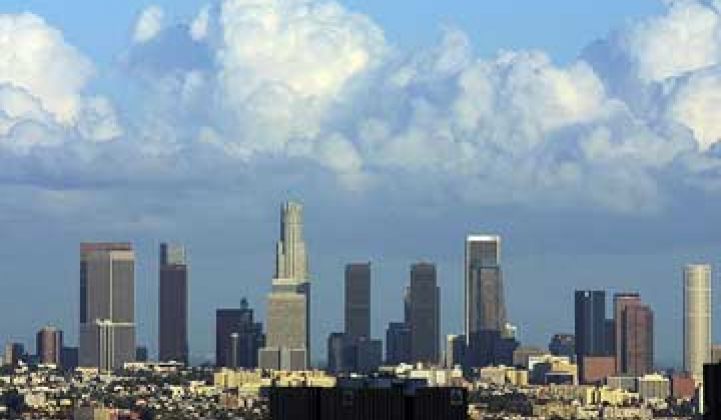After a decade of Energy Star building labels, Los Angeles sits clearly at the top of a list of 25 cities that lead the nation with Energy Star-rated buildings.
Just behind Los Angeles is Washington, D.C., and San Francisco is third, with 248 buildings that earned Energy Star labels by 2010, less than half the figure of 510 for Los Angeles, according to new data from the U.S. Environmental Protection Agency.

The figures may seem paltry in a country with five million commercial buildings, but the number of Energy Star labeled buildings, which have to score at least 75 out of 100, doubled between 2008 and 2010 and continues to grow at a steady clip.
Even though many cities have only a handful of Energy Star buildings, there are more than 120,000 buildings representing nearly 14 billion square feet that have been measured through Energy Star’s energy performance scale.
The number will continue to grow exponentially as some of the largest cities and states in the U.S. require energy benchmarking, almost always using Energy Star, for large commercial buildings.
"More and more organizations are discovering the value of Energy Star as they work to cut costs and reduce their energy use," EPA Administrator Lisa P. Jackson said in a statement. "This year marked the twentieth anniversary of the Energy Star program, and today Energy Star certified buildings in cities across America are helping to strengthen local economies and protect the planet for decades to come."
New York, which is moving up steadily in the rankings, recently benchmarked nearly 3,000 municipal buildings, and all of the city’s commercial buildings over 50,000 square feet will be required to benchmark and disclose energy performance.
The EPA is trying to keep up with demand by expanding the types of facilities that are eligible to earn Energy Star labels. Currently, offices, schools, hospitals, stores and a range of industrial plants can receive the award, but the EPA found that 20 percent of buildings that are in the performance database aren’t eligible for a score.
As seen with recent benchmarking data from New York and Washington, D.C., there are various ways to earn a high ranking. Hotel Nikko in San Francisco, for example, uses highly efficient fluorescents or LEDs in most of the building and has occupancy sensors in each room. A federal office building in Seattle, on the other hand, replaced an old cooling tower and upgraded elevator banks, lighting and control panels for the building automation system.
For most building owners, Energy Star benchmarking is just a first step. There are a host of startups and legacy building controls companies that are looking to help facilities with retrofits, whether it’s efficient lighting networks or software solutions to optimize HVAC.
But without innovative financing options, or market pressures to improve, Energy Star measurement will grow by leaps and bounds, but large-scale retrofits will roll slowly. For people who have been in the space for a long time, they see a host of problems with moving building managers or owners to action. "In buildings, many facilities managers don't think this is related to their job," John Byrne, professor of energy and climate policy at the University of Delaware, said on a panel about financing energy efficiency at the ARPA-E Energy Innovation Summit. "But if you put the right policies in place, the right market signals can work."



